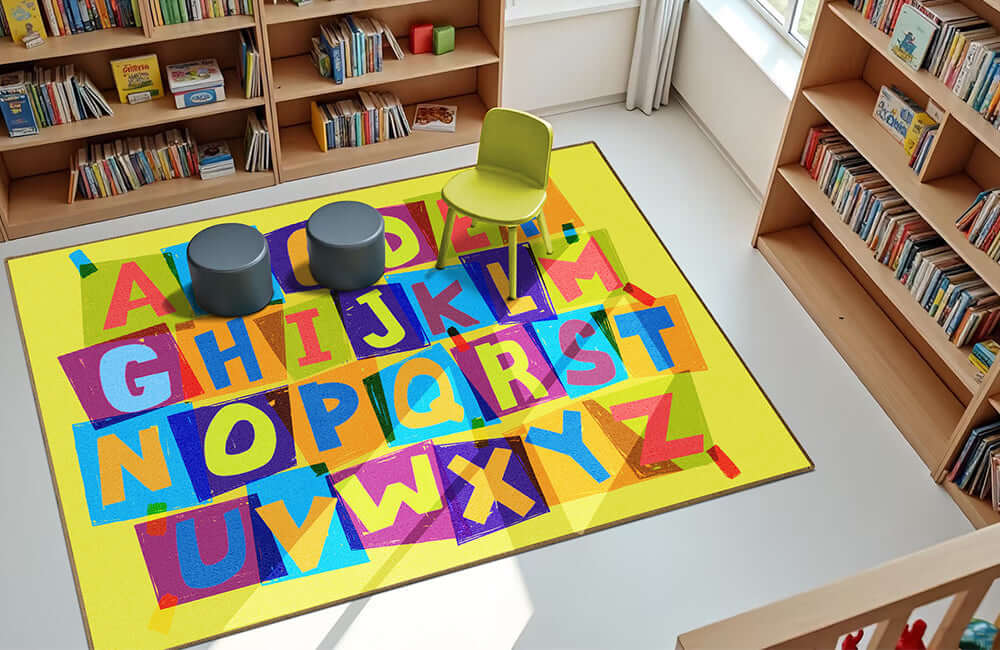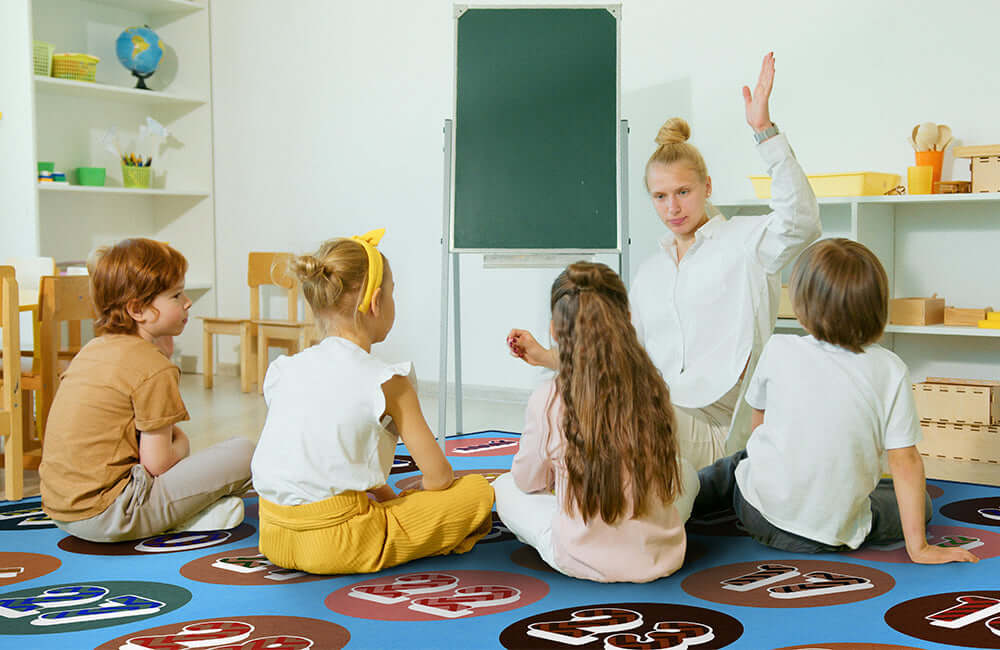The classroom rug—that colorful, comforting space where young minds gather for story time, morning meetings, and collaborative learning—serves as the heart of many educational environments. Selecting the right size for this vital classroom element isn't just about aesthetics; it's about creating functional learning spaces that support your teaching style and your students' needs.
Whether you're setting up your first classroom or refreshing an existing space, understanding the principles of rug sizing can transform your teaching area into an organized, comfortable, and engaging environment. This guide will walk you through everything you need to know about classroom rug dimensions to make the perfect choice for your educational setting.
Why Classroom Rugs Matter
Beyond adding warmth and color to your classroom, rugs serve multiple important functions:
- Defining spaces: Rugs create visual boundaries that help students understand different classroom zones
- Noise reduction: Fabric surfaces absorb sound, creating a quieter learning environment
- Comfort: Providing a soft surface for floor-based activities increases student comfort and focus
- Organization: Many classroom rugs feature built-in seating spots, numbers, or letters to facilitate structured activities
According to educational design experts at Edutopia, well-defined classroom spaces can significantly impact student behavior and learning outcomes. The right rug can be a cornerstone of this environmental design strategy.
Standard Classroom Rug Sizes
Classroom rugs typically come in several standard dimensions, each suited to different class sizes and purposes:
Small Gathering Rugs (6' x 9')
- Best for: Small groups of 8-12 students, reading corners, centers
- Space needed: Approximately 54 square feet of floor space
- Typical use: Kindergarten reading areas, small group instruction
Medium Classroom Rugs (8' x 10' or 9' x 12')
- Best for: Classes of 15-25 students
- Space needed: 80-108 square feet
- Typical use: Primary grade classrooms, morning meetings
Large Classroom Rugs (10' x 14' or 12' x 15')
- Best for: Full classes of 25-30 students
- Space needed: 140-180 square feet
- Typical use: Whole-class gatherings, elementary classrooms
Specialty Shapes
- Round rugs: Typically 6', 9', or 12' in diameter
- Square rugs: Often 8' x 8' or 10' x 10'
- Alphabet/number rugs: Dimensions vary by design and manufacturer
How to Measure Your Space
Before purchasing a classroom rug, careful measurement is essential:
- Clear the intended area of all furniture and obstacles
- Measure the maximum available length and width
- Subtract 2-3 feet from each dimension to allow for walkways around the perimeter
- Calculate your student seating needs using the formula: (number of students × 2 sq ft) + 9 sq ft for teacher space
According to classroom design research from Teacher Vision, allowing approximately 18-24 inches of seating space per student on a rug provides optimal comfort without overcrowding.
You can also use painter's tape to outline your intended rug area on the floor. This visual representation helps you assess whether the space will accommodate your entire class comfortably.
Age-Specific Considerations
Different age groups have distinct needs when it comes to classroom rug dimensions:
Early Childhood (Pre-K and Kindergarten)
- Recommended size: 9' x 12' minimum
- Space per student: 2-2.5 square feet
- Special features: Look for rugs with individual sitting spots, which help young learners understand personal space
Elementary (Grades 1-5)
- Recommended size: 9' x 12' to 12' x 15'
- Space per student: 2-2.5 square feet
- Special features: Consider rugs with educational elements like maps, alphabets, or number grids
Middle School and Beyond
- Recommended size: Flexible; often smaller rugs for specific purposes
- Space considerations: Focus on comfortable seating with more mature designs
- Special features: Neutral patterns and colors that don't feel "childish"
Research published in Wikipedia's article on classroom management suggests that appropriate physical environments, including adequate personal space, contribute significantly to student engagement and behavior management.
Special Configurations
Sometimes standard rectangular rugs don't meet your classroom's unique needs. Consider these specialized configurations:
Multiple Small Rugs
Using several smaller rugs (4' x 6' or 5' x 7') can create flexible learning zones throughout your classroom. This approach works well for:
- Centers-based instruction
- Mixed-use classrooms
- Rooms with irregular architecture
Shaped Rugs
Circular or semicircular rugs promote face-to-face interaction and can be ideal for:
- Morning meetings
- Literature circles
- Small group instruction
According to Cult of Pedagogy, intentional furniture arrangement, including rug placement, can significantly impact classroom dynamics and student interaction patterns.
Budget-Friendly Options
Quality classroom rugs can be expensive, but there are several ways to find budget-friendly options:
- End-of-year sales: Many educational supply companies offer discounts in May-July
- Grant opportunities: Check with your district, PTA/PTO, or websites like DonorsChoose
- Commercial-grade area rugs: Sometimes less expensive than education-specific options
- Modular carpet tiles: Create custom sizes and replace sections as needed
Remember that durability matters—investing in a higher-quality rug may save money in the long run, as replacement costs for cheap rugs can add up quickly.
Maintenance Considerations
The size of your classroom rug affects not just your budget but also ongoing maintenance:
- Larger rugs: More difficult to clean thoroughly and may require professional cleaning
- Medium rugs: Typically can be vacuumed easily but may be too heavy to shake out
- Small rugs: Easier to clean but may not meet whole-class needs
According to Edweek, considering long-term maintenance is a critical but often overlooked aspect of classroom design decisions.
Conclusion
Finding the perfect classroom rug dimensions involves balancing your available space, student needs, teaching style, and budget. By measuring carefully and considering how the rug will function in your daily teaching practice, you can create a gathering space that enhances learning and brings comfort to your classroom community.
Remember that the ideal rug size allows all students to sit comfortably while maintaining clear pathways around the perimeter. Whether you opt for a standard rectangular rug or something more specialized, this important classroom element will serve as the foundation for countless learning moments throughout the school year.




Leave a comment
This site is protected by hCaptcha and the hCaptcha Privacy Policy and Terms of Service apply.